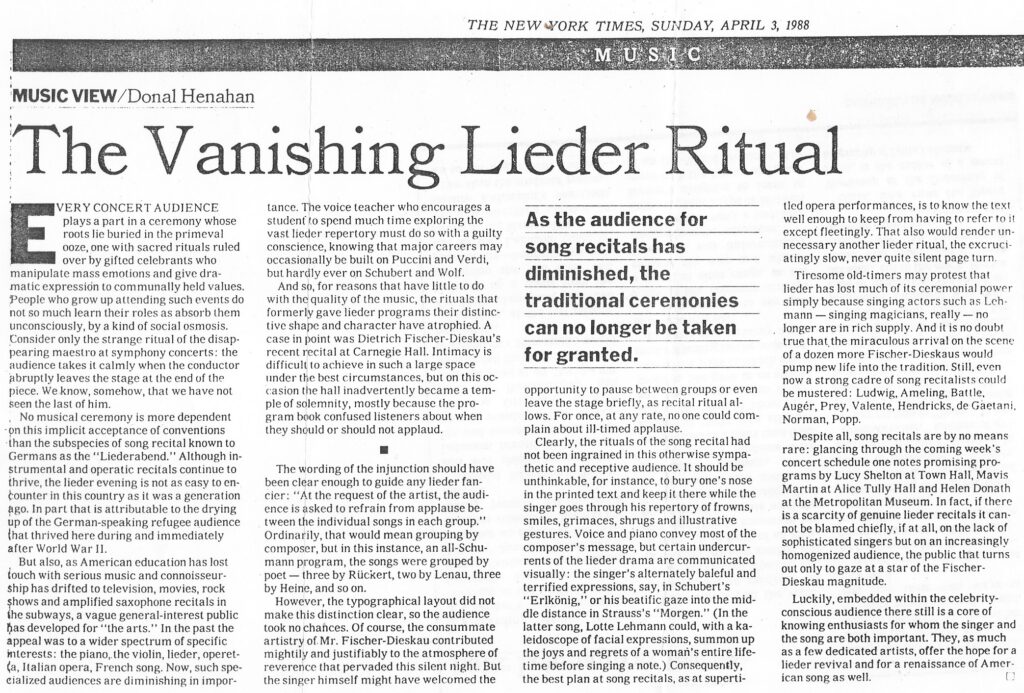The field of classical song, recital song, solo song, or the most common English expression, “art song” is seldom given the attention that the field deserves.
From this page you find those experts (singers, teachers, pianists, song festivals) and their services to art song.
Here you can also view my various art song projects:
- The archive of Singing and other Sins, our radio program on HPR 2 that used to be broadcast on Saturdays at 5pm
- Here’s an added page: Art Song News
- The film “Three American Art Songs”
- Ideas on Supra Titles for recitals
You can introduce yourself to the best performances of art song from the past as well as the present.
The World of Song Award was presented to those composers, pianists and singers who have a strong influence in the genre.
The International Art Song Contest has been discontinued. You can still enjoy programs from past winners.
Here’s an archive of winners of the Hawaii-based Art Song Contest. On this page you can see and hear Beebe Freitas at work.
We recorded some Honolulu-based singers to perform Hapa-Haole songs as art songs.
This site also offers a page of sampling of the history of great art song performance.
Finally, here’s a section on the various names and definitions of art song.

From Laura Tunbridge: Singing in the Age of Anxiety: Lieder Performances in New York and London between the World Wars 2018 (chapter 4) Saving Music:
This chapter begins with the political and economic situation of the early 1930s and the emigration of German singers Elena Gerhardt and Elisabeth Schumann to London. Once war broke out, there was a strikingly different attitude towards lieder in New York and London: they were no longer approached as songs of the enemy. Instead, Schubert, Schumann, Brahms, and Wolf became symbols of a civilization in danger of being destroyed by fascism. Throughout the course of the War, classical music was mobilized as a vehicle for cultural uplift and morale boosting, as exemplified by Myra Hess’s concert series at London’s National Gallery concerts. Particular performers were objected to because of their political affiliations, and the contentious case of Kirsten Flagstad’s return to New York is discussed in this chapter. War was not the only significant political issue: Marian Anderson’s concert at the Lincoln Memorial in 1939 protested racial segregation. After the War it seemed that a generation of singers had passed, encapsulated by Lotte Lehmann’s farewell concert of 1951.
